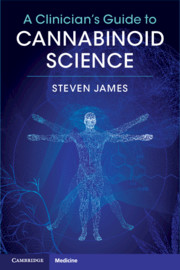Book contents
- A Clinician’s Guide to Cannabinoid Science
- Reviews
- A Clinician’s Guide to Cannabinoid Science
- Copyright page
- Dedication
- Contents
- Preface
- Section 1 An Introduction to Cannabinoid Science
- Chapter 1 An Introduction to the Botany and History of Cannabinoids
- Chapter 2 Δ9-Tetrahydrocannabinol (THC) and Cannabidiol (CBD)
- Chapter 3 The Endocannabinoids
- Chapter 4 Approved Cannabinoid Medicines for Therapeutic Use
- Chapter 5 The Safety of Phytocannabinoids and Cannabinoids in Clinical Practice
- Section 2 Potential Therapeutic Uses of Cannabinoids in Clinical Practice
- Index
- References
Chapter 5 - The Safety of Phytocannabinoids and Cannabinoids in Clinical Practice
from Section 1 - An Introduction to Cannabinoid Science
Published online by Cambridge University Press: 12 October 2020
- A Clinician’s Guide to Cannabinoid Science
- Reviews
- A Clinician’s Guide to Cannabinoid Science
- Copyright page
- Dedication
- Contents
- Preface
- Section 1 An Introduction to Cannabinoid Science
- Chapter 1 An Introduction to the Botany and History of Cannabinoids
- Chapter 2 Δ9-Tetrahydrocannabinol (THC) and Cannabidiol (CBD)
- Chapter 3 The Endocannabinoids
- Chapter 4 Approved Cannabinoid Medicines for Therapeutic Use
- Chapter 5 The Safety of Phytocannabinoids and Cannabinoids in Clinical Practice
- Section 2 Potential Therapeutic Uses of Cannabinoids in Clinical Practice
- Index
- References
Summary
The clinician should be aware that marijuana and medical marijuana are currently recognized by the US Drug Enforcement Agency (DEA) Comprehensive Drug Abuse Prevention and Control Act of 1970 (Controlled Substances Act) as a Schedule I controlled substance are defined as having a high potential for abuse, no currently accepted medicinal use in treatment in the United States, and a lack of accepted safety data for use of the treatment under medical supervision (Drug Enforcement Administration, 2016).
- Type
- Chapter
- Information
- A Clinician's Guide to Cannabinoid Science , pp. 55 - 69Publisher: Cambridge University PressPrint publication year: 2020



